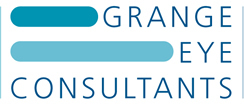How long does it take to recover from presbyopic laser eye surgery?
The most important thing in a patient’s recovery is a careful assessment before surgery. Because although most patients are suitable for presbyopic laser eye surgery, there are a small group of patients who when we test them do not tolerate any difference at all between the two eyes, that is very unusual, but it is a contraindication to treatment.
Adaptation period for those who are suitable.
In those patients who are suitable, the vast majority of patients, there is an adaptation period after surgery. What patients notice is that initially their reading vision is surprisingly good and their distance vision they may feel is disappointing. And this is because what the laser does is induce a change in shape on the surface of the eye and the eye then heals and recovers a little bit. And so the recovery of the cornea neutralizes that, if you like, over-enhancing the vision.
And that adaptation process takes place over a six-month period, but the vast majority of patients by three months have completely adapted. Now, it is important that we support patients during this adaptation process, so if, for example, their reading vision is excellent but they feel that their vision is not quite sharp enough to drive a car at night or even in the day if they’re driving on a motorway quickly, then we would give them temporary glasses to wear for that distance vision.
And that is something that some patients, maybe 5% or 10%, will opt for during that recovery process. It is less common that patients need help for reading because they are coping well with the reading and similarly with the computer. So, particularly if people are long-sighted with presbyopia, that adaptation period is a little longer, because of the changes induced on the cornea by a long-sighted treatment.
Short-sighted vs long-sighted patients.
If people are short-sighted with presbyopia, so someone in their 50s who is short-sighted, who when they wear contact lenses needs reading glasses on top, but they decide they want laser eye surgery, the adaptation process is a little quicker, because of the change that the laser causes on the cornea being very different in a short-sighted than in a long-sighted patient.
Essentially when you laser a short-sighted patient you flatten the cornea and when you laser a long-sighted patient you steepen the cornea, and that is the fundamental change between short and long-sightedness. And then you apply the presbyopic treatment in addition at the same time.
About the Author

Mr Robert Morris
BSc(Hons), MB BS (Hons), MRCP, FRCS, FRCOphth
Consultant Ophthalmic Surgeon
Robert Morris trained at St Bartholomew’s Hospital part of the University of London. He graduated with Honours in his final examinations. Robert completed his post-graduate ophthalmic training at the renowned units in Oxford Eye Hospital and London’s Moorfields Eye Hospital. Within the NHS, he has had a high volume cataract surgery practice and performed over 12,000 cataract procedures. He has an interest in squint surgery and is a national expert in this field. In addition to his NHS work, Robert manages a successful independent private practice. He continualy updates his training to keep abreast with the latest technology and techniques in refractive surgery.
